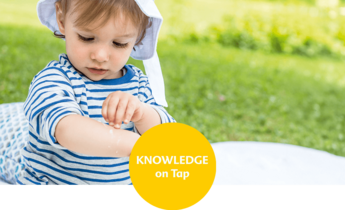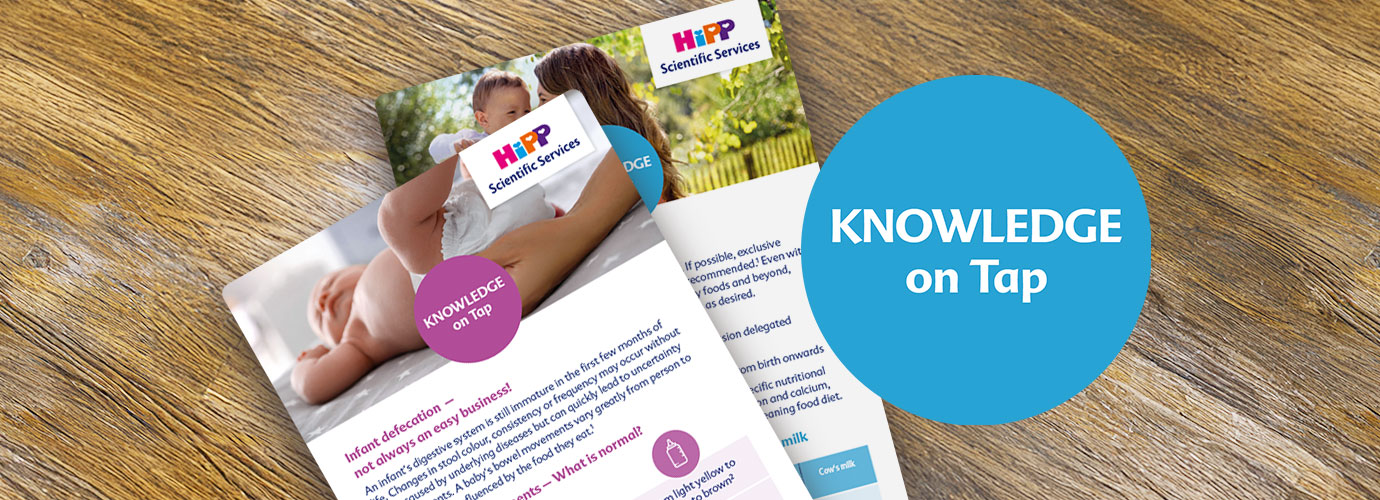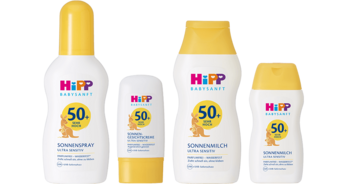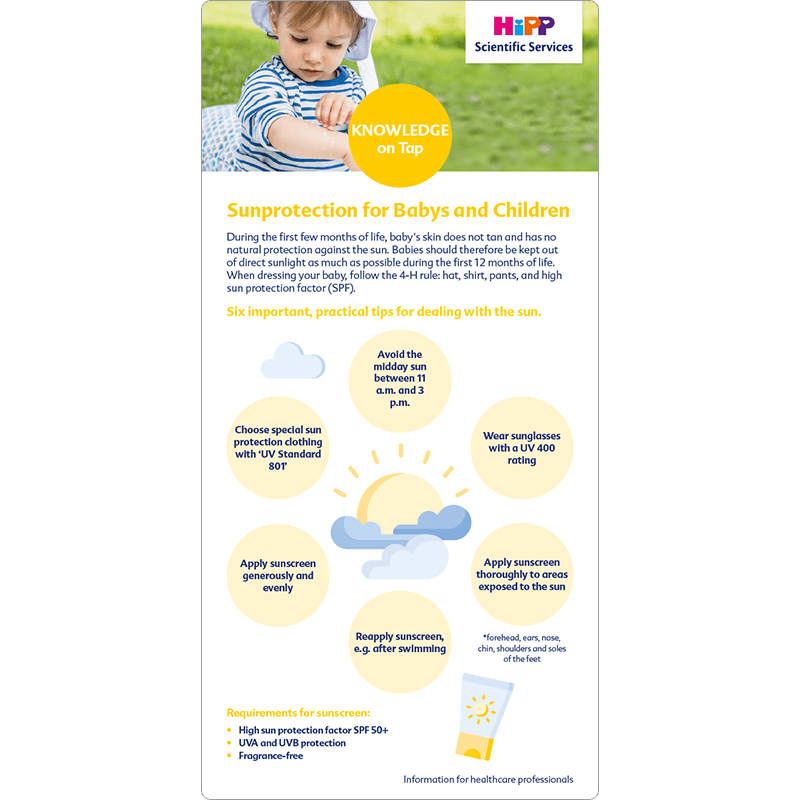Current sun protection for babies and children.

The delicate skin of babies and children is much more sensitive to sunlight than adult skin because it is significantly thinner and produces very little melanin. Due to this lack of natural sun protection, it is particularly important to protect babies‘ skin from direct sunlight, ideally by keeping them in the shade.
The right sunscreen product
Sun products intended for use by infants should be designed with specific considerations in mind. Creams/lotions without perfume, colorants, and preservatives are ideal, as these can unnecessarily irritate sensitive skin. Emulsifier-free sun creams/lotions are particularly recommended for people with sun allergies or sensitive skin, which is why they are also preferable for infants.
Using sunscreen with a high sun protection factor is an important action. In addition to this, small children but also adults, should spend the midday hours between 11 a.m. and 3 p.m. and times when the UV index is high in the shade. Wearing hats and UV-impermeable clothing is also recommended.1, 6
Important: During the first months of life, a baby‘s skin does not tan and has no natural protection against the sun – therefor babies should not be exposed to direct sunlight!
Furthermore, sunscreen products should offer UVB + UVA protection. Short-wave, high-energy UVB rays are responsible for sunburn. It is known, that sunburn in childhood significantly increases the risk of skin cancer.
Although long-wave UVA rays do not cause immediate sun damage, they penetrate deep into the skin and also contribute to the development of skin cancer.5 So, products that offers both, UVA and UVB protection. Another important criterion is that the cream is water-resistant.
Apply generously and reapply
Applying sunscreen too sparingly reduces the level of protection! It is recommendable to apply 2 mg of sunscreen per cm² of skin 20–30 minutes before swimming to prevent it from washing off. It is also advisable to reapply sunscreen, especially after contact with water and after dabbing the skin with a towel. Pay particular attention to your child‘s “sun terraces”: forehead, ears, nose, lips, chin, shoulders, and the backs of the feet.8
Does clothing provide good protection?
If you hold a children‘s T-shirt up to the sun and very little light shines through, you can assume that it offers good sun protection. This is particularly beneficial for areas of skin that are exposed to the sun at an almost right angle, which is why a loose-fitting T-shirt and a sun hat provide good protection. Make sure you choose tightly woven fabrics and long, loose-fitting pants and dresses. However, if the clothing is wet, most of its protective effect is lost. Clothing specifically designed for small children with a UV protection factor (SPF) is ideal. Look for UV protection factor UPF30 or UV standard 801, as this standard also takes into account the protection provided by the clothing when it is wet.4,7
Don‘t forget your sunglasses!
Don‘t forget your children‘s eyes! UV radiation can cause photochemical damage to proteins in the lens of the eye and possibly also cause long-term damage to the retina. 9 To protect children‘s eyes at the right time, it is advisable to use the UV index as a guide. When the UV index is 3 or higher, it is recommended that sunglasses with a 400 nm filter and adequate side coverage are worn.9,4
The positive side of the sun
The sun also has its good points! Spending time and exercising outdoors is not only good for your well-being, but also essential for the skin‘s own vitamin D production. For this, a 10-minute stay outdoors per day without sun protection is recommended, with hands and face uncovered.2
References:
1 BZgA (Bundeszentrale für gesundheitliche Aufklärung): Kinder vor UV Strahlung schützen – Tipps für Eltern. www.kindergesundheit-info.de, aufgerufen am 04.2025.
2 BAG (Bundesamt für Gesundheit): Vitamin D und Sonneneinstrahlung, 06.2021; Faktenblatt; Schweizerische Eidengenossenschaft.
3 BiÖG (Bundesinstitut für öffentliche Gesundheit): Warum Sonnenschutz immer wichtiger wird. www.bioeg.de, aufgerufen am 04.2025.
4 BfR (Bundesamt für Strahlenschutz): UV-Schutz durch Sonnencreme. www.bfr.bund.de, aufgerufen am 04.2025.
5 Deutsche Krebshilfe: UV-Strahlung und Hautkrebs – Clever in Sonne und Schatten. 04.2022. www.krebshilfe.de.
6 Skin Cancer Foundation; Schützt ein hoher Lichtschutzfaktor meine Haut besser? 05.2023. www.skincancer.org.
7 DOG (Deutsche ophthalmologische Gesellschaft): Frühe Sonnenschäden zählen doppelt; Warum UV-Schutz für Kinderaugen besonders wichtig ist; Pressemitteilung, 07.2024.
8 Kinder und Jugendärzte im Netz: Sonnenbrand und Sonnenallergie. www.kinderaerzte-im-netz.de, aufgerufen am 04.2025.




